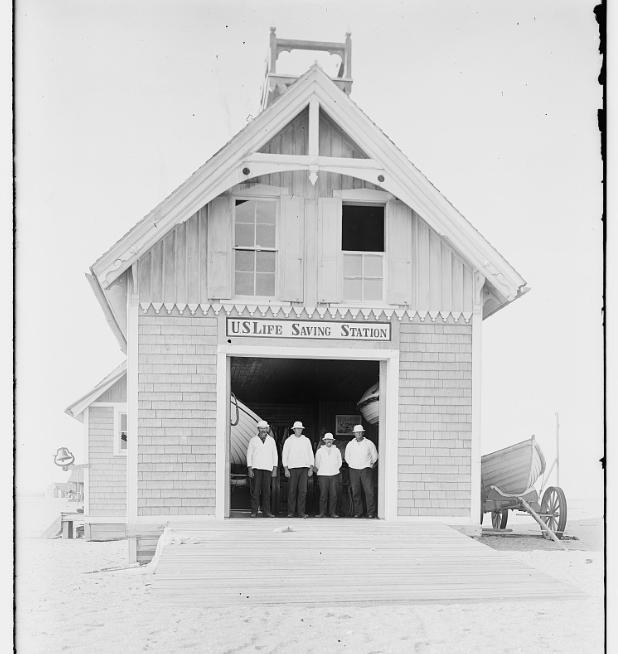
Photo taken by Wilbur Wright and Orville Wright
Originally built in 1878, the Kill Devil Hills Life Saving Station is rich with Outer Banks history. The Kill Devil Hills Life Saving Station, or Life Saving Station #13, was one of eleven stations built along the Outer Banks around the turn of the century. It was active until 1933 at its location on the oceanfront in Kill Devil Hills, to the east of what is now the Wright Brothers Memorial. By the 1980s, the station was in disrepair, wedged between a complex of motels in Kill Devil Hills. With tourism rising on the Outer Banks, summer visitor numbers soared between Memorial Day and Labor Day.
After Labor Day each year, Doug Twiddy would approach the owner of First Flight Inn and Raleigh Motel with an offer to purchase the aging Kill Devil Hills Life Saving Station. He was turned down each year, as the building was being used for employee housing. In 1986, the owner finally said yes, on the condition that the building be moved from its original location before the next tourist season.